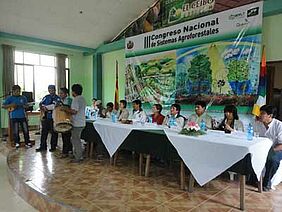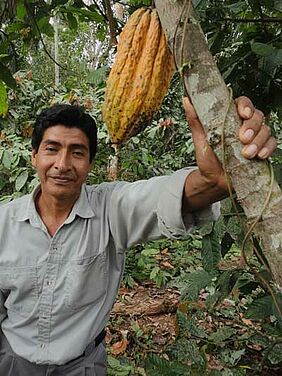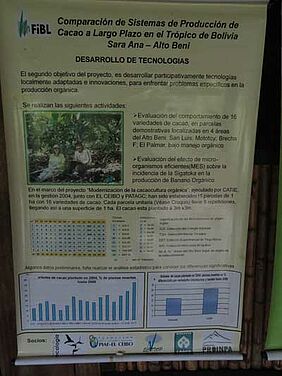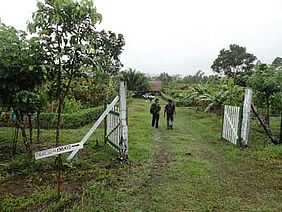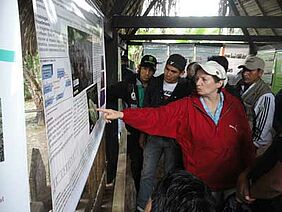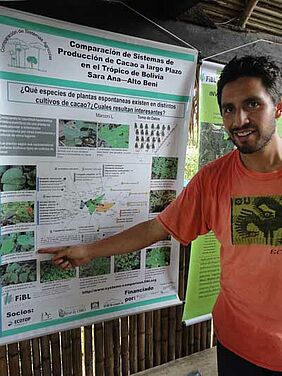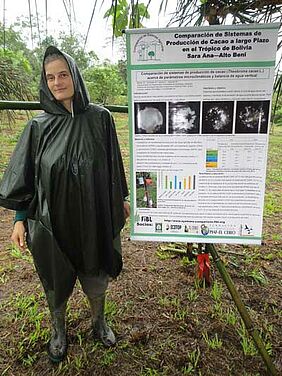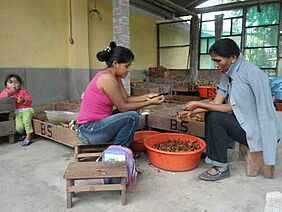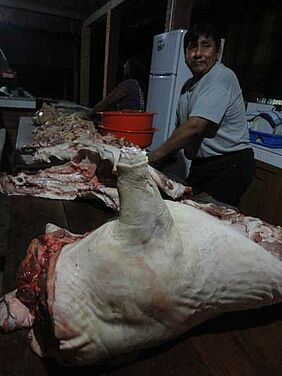On the weekend of 24-25 August 2013, Frick in Switzerland was not the only magnet for visitors to FiBL’s facilities and trials. At the same time, the 3rd Congreso Nacional de Sistemas Agroforestales took place in the region of Alto Beni at the foot of the Andes. At the beginning of the congress, the 250 delegates - producers, extensionists, scientists and students – gathered on Friday at the headquarters of the El Ceibo cocoa cooperative in Sapecho (www.elceibo.org/ceibo/en/index.php).
El Ceibo unites 1200 farming families cultivating an overall area of 5000 hectares. All of them have organic certification. The cooperative provides advice, training and inputs – and processes the cocoa in a facility of its own in El Alto near La Paz. From there, the produce is exported, including to Europe for some years now.
Agroforestry has long been a component of successful cocoa cultivation in Alto Beni. It therefore made sense for FiBL to select the cooperative association as its trial partner. Suitable plots were found in August 2007 in the municipality of Sara Ana, about one and a half hour’s drive from Sapecho. Cocoa cultivation is a part of the Farming Systems Comparison in the Tropics. With support from the Swiss Agency for Development and Cooperation SDC, the Coop Sustainability Fund, the Biovision Foundation and the Liechtenstein Development Service LED, FIBL is carrying out further trials in India and Kenya (www.systems-comparison.fibl.org). The purpose of the systems comparison is to place discourse on the effectiveness of organic farming, which all too often follows ideological lines, on a rational basis by providing scientific data.
With substantial logistical difficulties – in contrast to FiBL’s anniversary open day in Switzerland it rained non-stop in Alto Beni – the delegates travelled on the second day of the congress to Sara Ana. The visitors did not regret the trouble they had taken: in the spacious trial facility, they gained insights into all aspects of the work there and enjoyed culinary delights.
In the trial, FiBL is comparing five management systems on four plots for each system: organic monoculture, conventional monoculture, organic agroforestry, conventional agroforestry and, finally, a method called organic successive agroforestry. The latter method involves planting very closely and using the tree pruning material as “fuel” to counteract the decomposition of organic matter, which is particularly rapid in tropical climates. A sixth set of plots serves as control for the development of soil fertility and biodiversity: here no management interventions whatsoever are conducted on plots of 48x48 metres size, permitting growth of whatever the soil allows.
The cocoa trees at the trial site were planted in December 2008. As they are only now entering their phase of full productivity, it is still too early to draw definite conclusions. Initial findings do indicate, however, that the differences in terms of yield, biodiversity and water balance are indeed substantial, as project coordinator Monika Schneider explained in Alto Beni.
Text: Adrian Krebs, FiBL; Translation: Christopher Hay, Translation Bureau for Environmental Sciences
Further information
Kontakt
- Adrian Krebs
- Monika Schneider
Links
- elceibo.org: Homepage
- systems-comparison.fibl.org: Homepage





